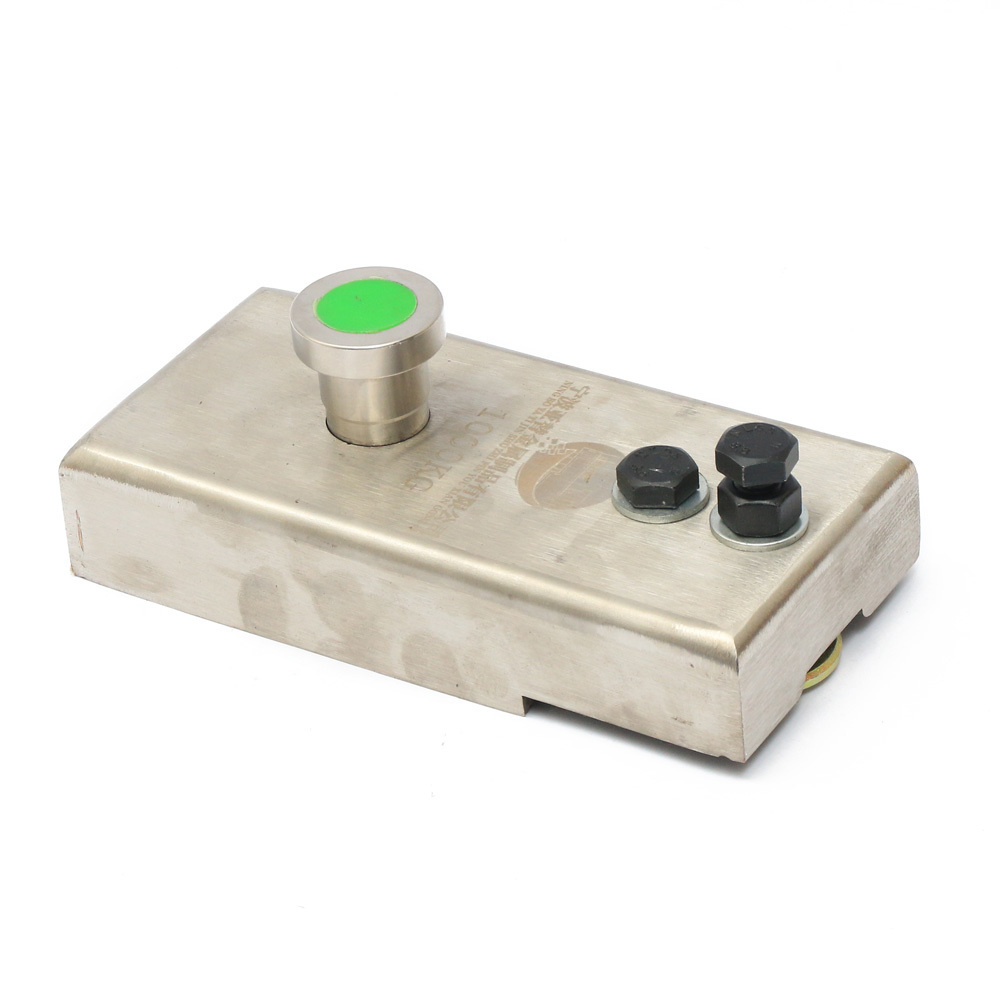The Role of Formwork Magnets in Modern Electrical Engineering
The Role of Formwork Magnets in Modern Electrical Engineering Table of Contents 1. Introduction to Formwork Magnets 2. What Are Formwork Magnets? 3. Applications of Formwork Magnets in Electrical Engineering 4. Benefits of Using Formwork Magnets 5. Working Principle of Formwork Magnets 6. Formwork Magnets vs. Traditional Methods 7. The Future of Formwor
The Role of Formwork Magnets in Modern Electrical Engineering
Table of Contents
- 1. Introduction to Formwork Magnets
- 2. What Are Formwork Magnets?
- 3. Applications of Formwork Magnets in Electrical Engineering
- 4. Benefits of Using Formwork Magnets
- 5. Working Principle of Formwork Magnets
- 6. Formwork Magnets vs. Traditional Methods
- 7. The Future of Formwork Magnets in Engineering
- 8. Frequently Asked Questions
- 9. Conclusion
1. Introduction to Formwork Magnets
In the landscape of modern electrical engineering, *formwork magnets* stand out as pivotal tools, facilitating a range of applications that enhance efficiency and precision in construction and electrical assembly. Their ability to provide secure, reliable attachment points without the need for traditional clamping methods makes them invaluable. As we delve deeper into the role of formwork magnets, we will explore their design, applications, benefits, and future potential within the industry.
2. What Are Formwork Magnets?
Formwork magnets are specialized devices used primarily in the construction and electrical engineering fields. These magnets are designed to hold formwork in place, ensuring that concrete structures can be constructed with precision. They are typically made from high-quality magnetic materials that offer strong holding power, allowing for quick and efficient installation while reducing the risk of misalignment.
Types of Formwork Magnets
There are primarily two types of formwork magnets: **permanent magnets** and **electromagnets**. Permanent magnets provide a consistent holding force without requiring power, making them ideal for various static applications. Meanwhile, electromagnets can be turned on and off, providing flexibility and control in dynamic environments where adjustments may be necessary.
3. Applications of Formwork Magnets in Electrical Engineering
Formwork magnets find their application in multiple areas of electrical engineering.
Electrical Panel Assembly
In the assembly of electrical panels, formwork magnets can be used to secure components in place during installation. This stability not only speeds up the assembly process but also enhances accuracy, ensuring that panels are constructed to meet stringent safety standards.
Concrete Casting
In concrete casting, formwork magnets are essential for holding forms securely in place. This function is crucial for creating precise shapes and dimensions that meet engineering specifications. The use of magnets minimizes the need for additional hardware, simplifying the construction process.
Guiding Fixtures for Wiring
Formwork magnets can also serve as guiding fixtures for wiring during installations. By providing a stable support system, they enable electricians to work more efficiently, reducing the risk of errors.
4. Benefits of Using Formwork Magnets
Utilizing formwork magnets in electrical engineering brings forth numerous advantages:
Enhanced Efficiency
The primary benefit of formwork magnets is their ability to significantly enhance efficiency. By eliminating the need for clamps and screws, workers can focus on their tasks without interruptions.
Improved Safety
Formwork magnets contribute to improved safety on job sites. Their strong holding capacity reduces the likelihood of formwork shifting during concrete pouring, preventing potential accidents.
Cost-Effectiveness
Over time, the use of formwork magnets can prove to be cost-effective. They minimize labor costs by speeding up installation processes and reducing material waste associated with traditional methods.
5. Working Principle of Formwork Magnets
The effectiveness of formwork magnets lies in their working principle, which is based on the fundamentals of magnetism.
Magnetic Force Generation
Formwork magnets utilize the magnetic properties of certain materials to generate a holding force. When a ferromagnetic material, such as steel, is introduced to the magnetic field, it becomes magnetized, allowing the magnet to adhere securely.
Activation and Deactivation
In the case of electromagnets, the activation and deactivation process involves controlling the flow of electricity. By switching the current on, the electromagnet generates a strong magnetic field, securing the formwork in place. Turning off the current allows for easy removal of the magnet when required.
6. Formwork Magnets vs. Traditional Methods
When comparing formwork magnets to traditional methods, the advantages become immediately apparent.
Speed of Installation
Traditional methods often involve intricate setups with numerous components. In contrast, formwork magnets allow for rapid, straightforward installation, drastically reducing the time required to secure formwork.
Space Efficiency
Traditional clamping methods can require additional tools and space, complicating the workspace. Formwork magnets, on the other hand, are compact and can be easily positioned, allowing for a more organized and efficient work environment.
Reduction of Material Waste
The simplicity of using formwork magnets leads to a significant reduction in material waste. Without the need for screws, clamps, and other hardware, overall material usage diminishes, contributing to more eco-friendly construction practices.
7. The Future of Formwork Magnets in Engineering
As the engineering landscape continues to evolve, the role of formwork magnets is expected to expand. Innovations in material science and magnet technology may lead to even stronger and more versatile magnets, opening new avenues for their application.
Integration with Smart Technologies
The integration of smart technologies could revolutionize the use of formwork magnets. Imagine magnets equipped with sensors that monitor alignment and stability in real-time, providing instant feedback to engineers and technicians.
Increased Adoption in Various Sectors
Beyond electrical engineering, the potential for formwork magnets spans across various sectors including automotive, aerospace, and manufacturing. Their efficiency and reliability make them suitable for numerous applications, thereby encouraging broader adoption.
8. Frequently Asked Questions
1. What materials are used in formwork magnets?
Formwork magnets are typically made from high-grade magnetic materials such as neodymium or ferrite, which provide strong holding power.
2. Can formwork magnets be used outdoors?
Yes, many formwork magnets are designed to withstand outdoor conditions; however, it's crucial to select magnets that are resistant to rust and corrosion for prolonged outdoor use.
3. How do you maintain formwork magnets?
To maintain formwork magnets, keep them clean and free from debris. Avoid dropping or subjecting them to strong impact, which can demagnetize them.
4. What are the weight limits for formwork magnets?
The weight limits for formwork magnets vary based on the magnet's specifications. Always refer to the manufacturer's guidelines for the appropriate weight capacity.
5. Are there any safety precautions when using formwork magnets?
Yes, when using formwork magnets, ensure they are securely placed and avoid placing fingers near the magnetic field to prevent pinching or injury.
9. Conclusion
In conclusion, formwork magnets play a crucial role in modern electrical engineering by enhancing efficiency, safety, and precision in various applications. Their unique ability to provide strong, reliable support without the complications of traditional methods makes them an invaluable asset in construction and assembly processes. As the industry continues to innovate, the future of formwork magnets appears bright, promising further advancements that will transform engineering practices for years to come. The integration of smart technologies and expanded adoption across various sectors will likely propel formwork magnets to the forefront of innovative engineering solutions.
MORE
29 Jul,2025
The Role of Formwork Magnets in Modern Electrical Engineering
The Role of Formwork Magnets in Modern Electrical Engineering
Table of Contents
1. Introduction to Formwork Magnets
2. What Are Formwork Magnets?
3. Applications of Formwork Magnets in Electrical Engineering
4. Benefits of Using Formwork Magnets
5. Working Principle of Formwork Magnets
6. Formwork Magnets vs. Traditional Methods
7. The Future of Formwor
DETAILS
29 Jul,2025
Building the Future: The Role of Precast Shuttering in Modern Construction
Discover how Precast Shuttering is revolutionizing construction with efficiency and innovation.
DETAILS

